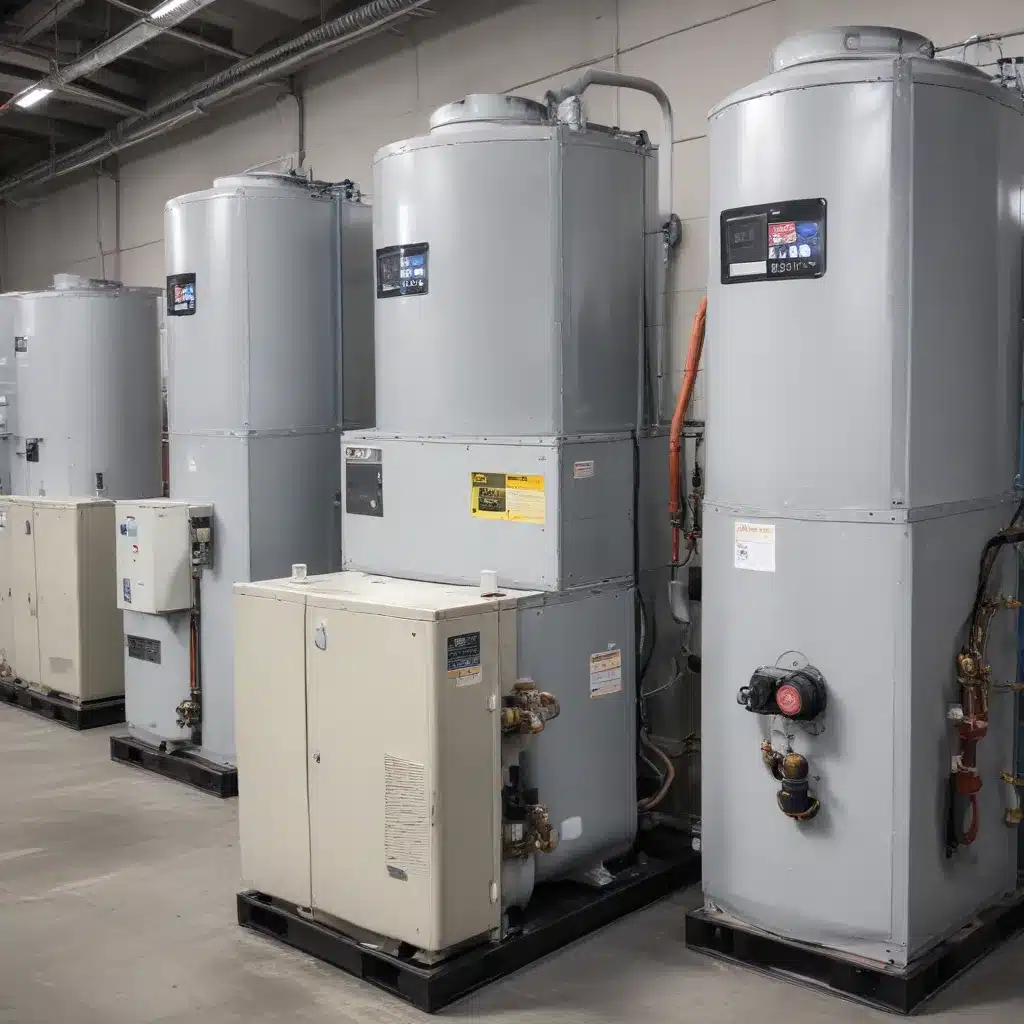
In the rapidly evolving world of HVAC and refrigeration, where compliance with environmental regulations and a focus on sustainability are paramount, the role of refrigerant reclamation has become increasingly critical. As facility managers, HVAC contractors, and environmental compliance officers navigate this complex landscape, it is essential to develop comprehensive strategies that optimize the reclamation process, enhance regulatory adherence, and drive long-term environmental stewardship.
Regulatory Compliance Considerations
The Clean Air Act and the AIM Act have ushered in a new era of heightened scrutiny surrounding the management of fluorinated greenhouse gases, including hydrofluorocarbons (HFCs) and chlorofluorocarbons (CFCs). Coupled with emerging state-level regulations and growing concerns about per- and polyfluoroalkyl substances (PFAS), organizations must adopt a proactive approach to ensure compliance and mitigate the risk of penalties, operational disruptions, and reputational damage.
By establishing a dedicated refrigerant management committee, companies can effectively navigate the regulatory landscape, develop comprehensive reclamation strategies, and align their operations with both compliance requirements and sustainability objectives. This cross-functional team, comprising stakeholders from various departments, including facilities, operations, finance, and sustainability, can leverage data-driven insights to make informed decisions, streamline processes, and drive continuous improvement.
Sustainability Factors in Reclamation
Beyond the imperative of regulatory compliance, the push for environmentally responsible practices has elevated the importance of sustainable refrigerant management. By adopting a holistic approach to refrigerant reclamation, organizations can reduce their carbon footprint, minimize waste, and contribute to a more circular economy.
The social cost of carbon (SCC) has emerged as a critical metric, enabling decision-makers to quantify the environmental impact of refrigerant leaks and guide investment decisions towards low-GWP (global warming potential) alternatives and energy-efficient systems. Incorporating the SCC into the refrigerant management committee’s decision-making process can help organizations make more informed choices, prioritize the use of reclaimed refrigerants, and explore innovative recovery and recycling solutions.
Techniques for Efficient Refrigerant Recovery
Optimizing the refrigerant reclamation process requires a combination of advanced technologies, robust procedures, and well-trained personnel. Refrigerant recovery techniques, such as using recovery cylinders and manifold gauges, play a vital role in minimizing emissions and ensuring the proper handling of refrigerants during equipment servicing or decommissioning.
Implementing leak detection methods, including ultrasonic sensors and infrared cameras, can help identify and address leaks proactively, reducing the need for emergency refrigerant refills and the associated environmental impact. Additionally, refrigerant tracking software and cylinder management systems can provide real-time visibility into the organization’s refrigerant inventory, streamlining the reclamation process and enhancing compliance reporting.
Refrigerant Reclamation Strategies
Process Optimization Approaches
Optimizing the reclamation process involves a strategic blend of preventive maintenance, data-driven decision-making, and collaboration among various stakeholders. By transitioning from a reactive maintenance approach to a more proactive, condition-based model, organizations can extend the lifespan of their HVAC and refrigeration assets, reduce unplanned downtime, and minimize the need for emergency refrigerant refills.
Leveraging predictive analytics and asset management software can help the refrigerant management committee identify optimal repair, replacement, or retrofit opportunities, ensuring that the organization’s equipment operates at peak efficiency and minimizes refrigerant leaks.
Emerging Reclamation Technologies
The landscape of refrigerant reclamation is continuously evolving, with the emergence of innovative technologies that enhance the efficiency, purity, and traceability of the reclamation process. Automated refrigerant recovery systems, refrigerant distillation units, and closed-loop reclamation equipment can help organizations streamline their operations, reduce manual handling, and ensure the reclaimed refrigerant meets industry-standard purity levels.
Environmental Impact Mitigation
By prioritizing the use of low-GWP refrigerants, implementing robust leak detection and monitoring systems, and exploring opportunities for refrigerant reuse and recycling, organizations can significantly reduce their environmental footprint. The refrigerant management committee can also investigate the potential for carbon offsets or carbon insets related to strategic investments in refrigerant management and leak detection technologies.
Compliance and Reporting Requirements
Regulatory Frameworks and Guidelines
Navigating the complex web of regulatory requirements, from the Clean Air Act and the AIM Act to emerging state-level guidelines and PFAS controls, is a critical responsibility of the refrigerant management committee. Staying up-to-date with the latest developments and ensuring comprehensive compliance is essential to avoid legal consequences and maintain a positive reputation.
Documentation and Record-keeping
Robust documentation and record-keeping are cornerstones of an effective refrigerant management program. The committee must establish standardized processes for refrigerant inventory tracking, service and maintenance logs, and compliance reporting, ensuring that the organization is prepared for regulatory audits and able to demonstrate its commitment to environmental stewardship.
Auditing and Certification Processes
Regular audits and third-party certifications can help organizations validate the effectiveness of their refrigerant management strategies and identify areas for improvement. By engaging with industry-recognized certification programs, such as the EPA’s GreenChill Partnership, companies can showcase their dedication to sustainability and differentiate themselves in the marketplace.
Sustainability Metrics and Benchmarking
Energy Efficiency in Reclamation
The refrigerant management committee should prioritize investments in energy-efficient technologies and processes that optimize the reclamation process. This may include implementing heat recovery systems, refrigerant distillation units, and automated recovery equipment, which can significantly reduce the energy consumption associated with refrigerant handling and recycling.
Refrigerant Reuse and Recycling
Promoting the reuse and recycling of refrigerants is a crucial aspect of sustainable refrigerant management. By establishing partnerships with licensed refrigerant reclamation facilities and developing closed-loop systems, organizations can minimize waste, reduce their reliance on virgin refrigerants, and contribute to a more circular economy.
Waste Minimization Initiatives
In addition to optimizing the reclamation process, the refrigerant management committee should explore strategies to minimize waste, including refrigerant storage and handling practices, equipment decommissioning protocols, and employee training programs that emphasize the importance of responsible refrigerant management.
By adopting a comprehensive, data-driven approach to refrigerant reclamation, organizations can not only enhance compliance with environmental regulations but also drive sustainable practices that contribute to a cleaner and more resilient future. The refrigerant management committee, armed with the right tools, strategies, and a focus on innovation, can lead the way in optimizing refrigerant management and setting new industry standards for environmental stewardship.

